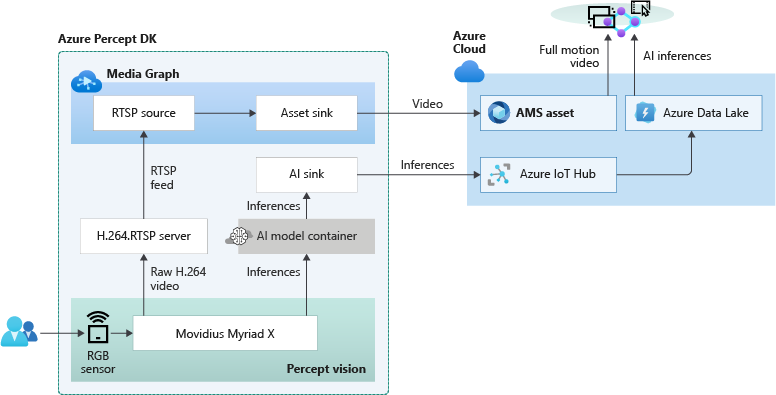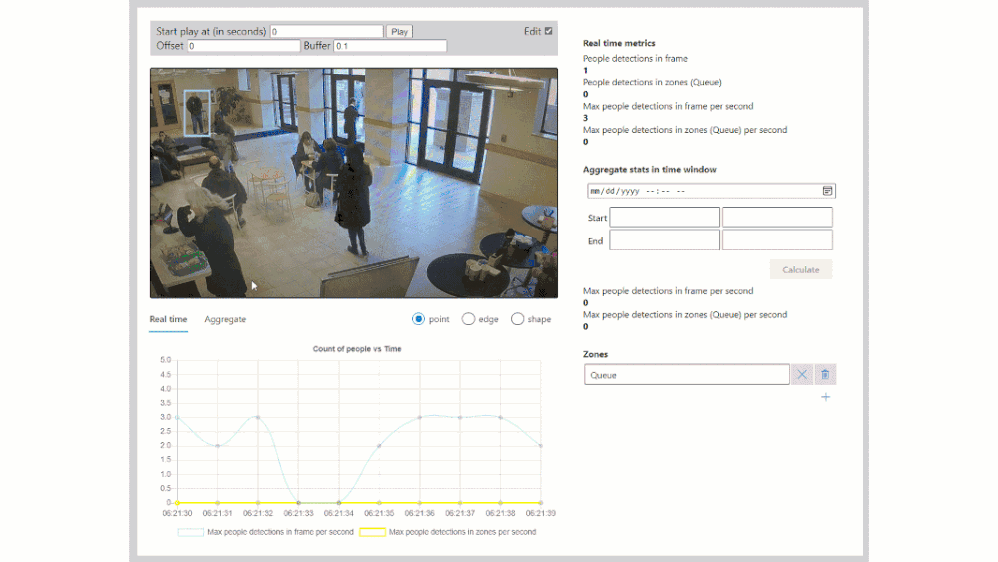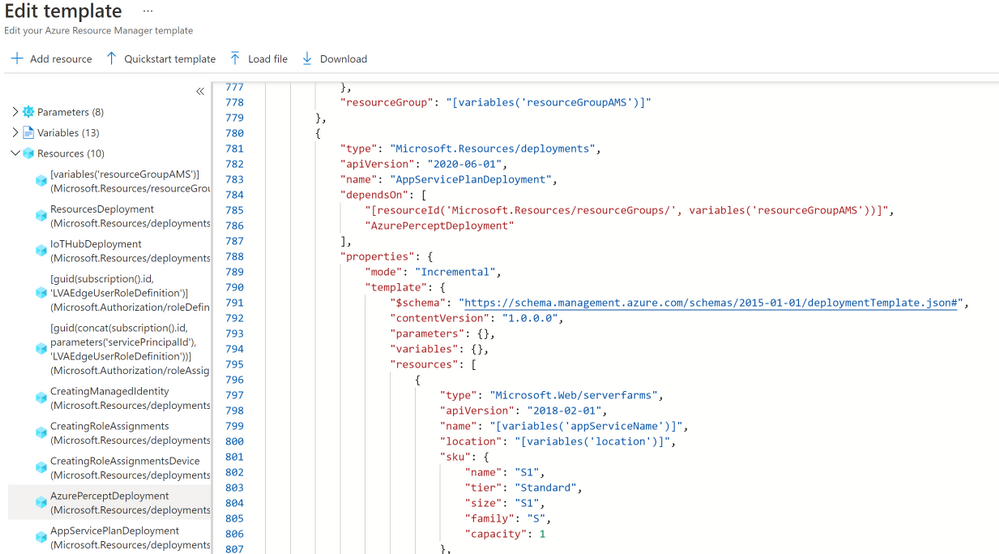This article is contributed. See the original author and article here.
The combination of artificial intelligence and computing on the edge enables new high-value digital operations across every industry: retail, manufacturing, healthcare, energy, shipping/logistics, automotive, etc. Azure Percept is a new zero-to-low-code platform that includes sensory hardware accelerators, AI models, and templates to help you build and pilot secured, intelligent AI workloads and solutions to edge IoT devices. This posting is a companion to the new Azure Percept technical deep-dive on YouTube, providing more details for the video:
Hardware Security
The Azure Percept DK hardware is an inexpensive and powerful 15-watt AI device you can easily pilot in many locations. It includes a hardware root of trust to protect AI data and privacy-sensitive sensors like cameras and microphones. This added hardware security is based upon a Trusted Platform Module (TPM) version 2.0, which is an industry-wide, ISO standard from the Trusted Computing Group. Please see the Trusted Computing Group website for more information with the complete TPM 2.0 and ISO/IEC 11889 specification. The Azure Percept boot ROM ensures integrity of firmware between ROM and operating system (OS) loader, which in turn ensures integrity of the other software components, creating a chain of trust.
The Azure Device Provisioning Services (DPS) uses this chain of trust to authenticate and authorize each Azure Percept device to Azure cloud components. This enables an AI lifecycle for Azure Percept: AI models and business logic containers with enhanced security that can be encrypted in the cloud, downloaded, executed at the edge, with properly signed output sent to the cloud. This signing attestation provides tamper-evidence for all AI inferencing results, providing a more fully trustworthy environment. More information on how the Azure Percept DK is authenticated and authorized via the TPM can be found here: Azure IoT Hub Device Provisioning Service – TPM Attestation.
Example AI Models
This example showcases a Percept DK semantic segmentation AI model (Github source link) based upon U-Net, trained to recognize the volume of bananas in a grocery store. In the video below, the bright green highlights are the inferencing results from the U-Net AI model running on the Azure Percept DK:
Semantic segmentation AI models label each pixel in a video with the class of object for which it was trained, which means it can compute the two-dimensional size of irregularly shaped objects in the real world. This could be the size of an excavation from a construction site, the volume of bananas in a bin, or the density of packages in a delivery truck. Since you can perform AI inferencing over these items periodically, this enables time-series data upon the change in shape of the objects being detected. How fast is the hole being excavated? How efficient is the cargo space loading utilization in the delivery truck? In the banana example above, this time series data allows retailers reduce food waste by creating more efficient supply chains with less safety stock. In turn this reduces CO2 emissions by less transportation of fresh food, and less fertilizer required in the soil.
This example also showcases the Bring Your Own Model (BYOM) capabilities of Azure Percept. BYOM allows you to bring your own custom computer vision pipeline to your Azure Percept DK. This tutorial shows how to convert your own TensorFlow, ONNX or Caffe models for execution upon the Intel® Movidius™ Myriad™ X within the Azure Percept DK, and then how to subclass video pipeline IoT container to integrate your inferencing output. Many of the free, pre-trained open-source AI models in the Intel Model Zoo will run on the Myriad X.
People Counting Reference Application
Combining edge-based AI inferencing and video with cloud-based business logic can be complex. Egress, storage and synchronization of the edge AI output and H.264 video streams in the cloud makes it even harder. Azure Percept Studio includes a free, open source reference application which detects people and generates their {x, y} coordinates in a real-time video stream. The application also provides a count of people in a user-defined polygon region within the camera’s viewport. This application showcases the best practices for security and privacy-sensitive AI workloads.
The overall topology of the reference application is shown below. The left side of the illustration contains the set of components which run at the edge within Azure Percept DK. The H.264 video stream and the AI inferencing results are then sent in real-time to the right side which runs in the Azure public cloud:

Because the Myriad X performs hardware encoding of both the compressed full motion H.264 video stream and AI inferencing results, hardware-synchronized timestamps in each stream makes it possible to provide downstream frame-level synchronization for applications running in the public cloud. The Azure Websites application provided in this example is fully stateless, simply reading the video + AI streams from their separate storage accounts in the cloud and composing the output into a single user interface:

Included in the reference application is also a fully automated deployment model utilizing an Azure ARM template. If you click the “Deploy to Azure” button, then “Edit Template”, you will see this code:

This ARM template deploys the containers to the Azure Percept DK, creates the storage accounts in the public cloud, connects the IoT Hub message routes to the storage locations, deploys the stateless Azure Websites, and then connects the website to the storage locations. This example can be used to accelerate the development of your own hybrid edge/cloud workloads.
Get Started Today
Order your Percept DK today and get started with our easy-to-understand samples and tutorials. You can rapidly solve your business modernization scenarios no matter your skill level, from beginner to an experienced data scientist. With Azure Percept, you can put the cloud and years of Microsoft AI solutions to work as you pilot your own edge AI solutions.
Brought to you by Dr. Ware, Microsoft Office 365 Silver Partner, Charleston SC.


Recent Comments